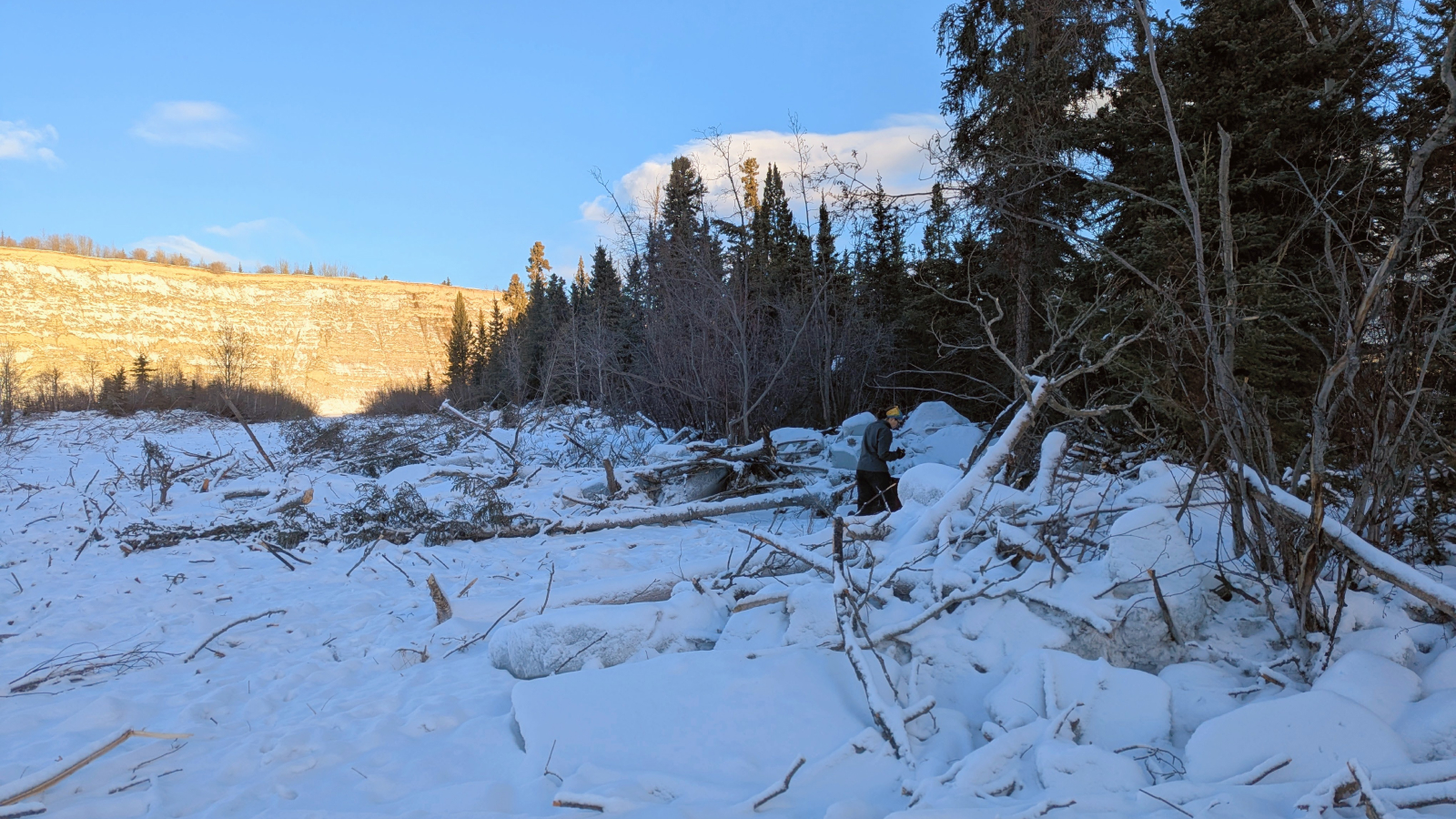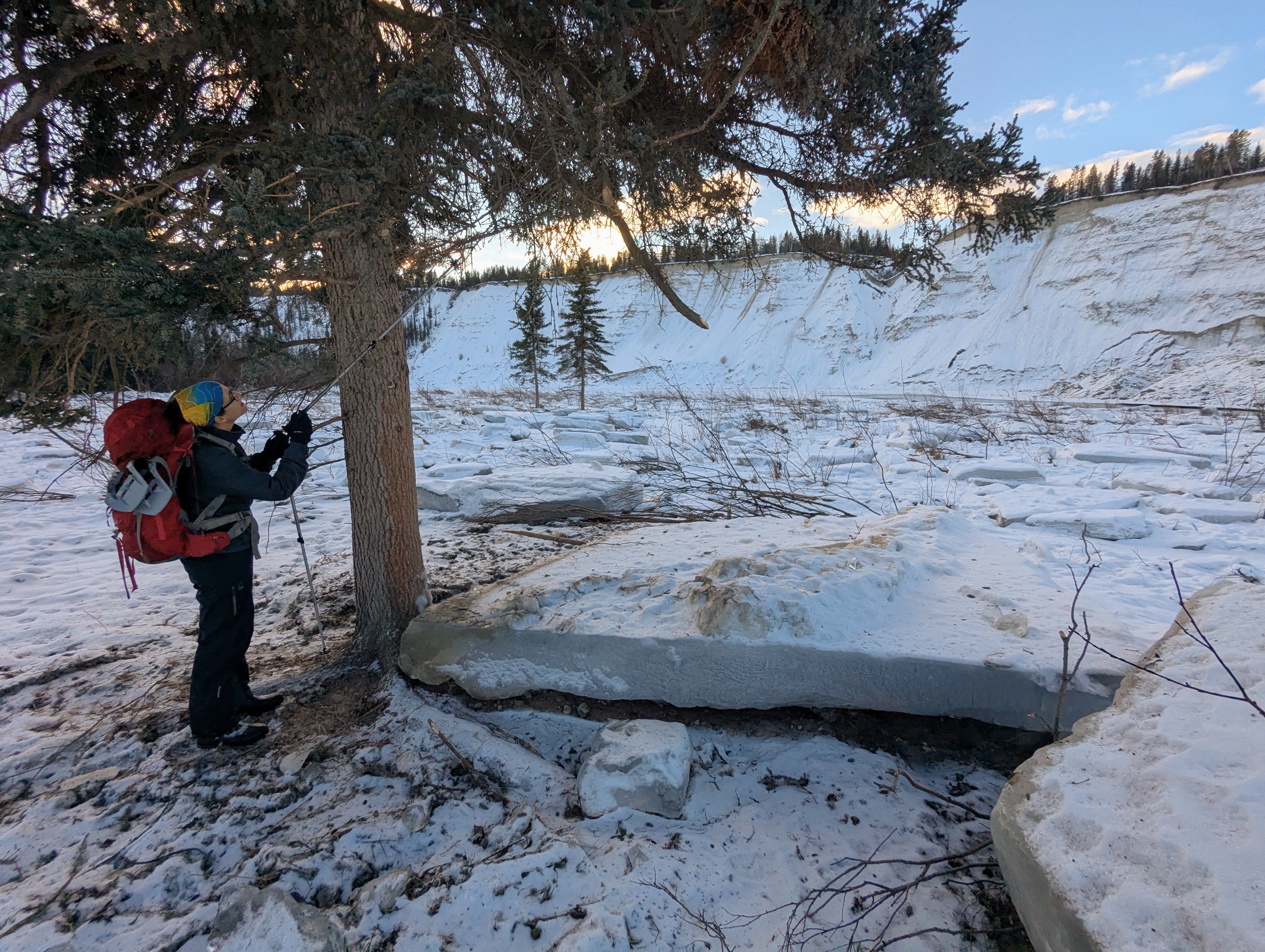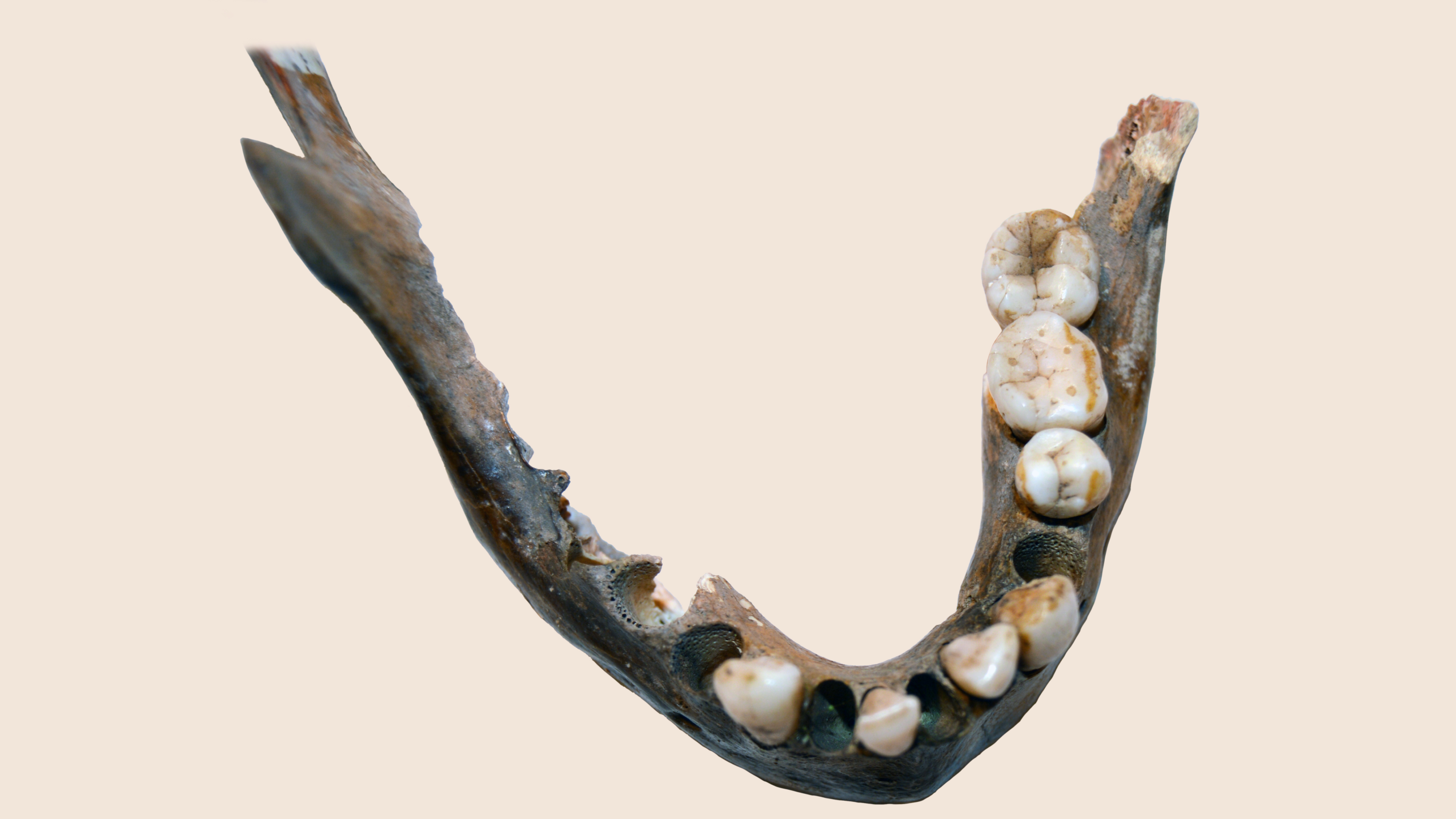An 'ice tsunami' in 2024 ripped through the Yukon with such force it tore up trees and the riverbed
Chunks of river ice tore down trees after a landslide caused a tsunami in the Yukon in December.

A landslide into a river in Canada's Yukon territory last December sent a tsunami of ice slabs flying over two football fields away, severing trees in the process.
Now, new research suggests that the damage from this "ice tsunami" was worsened by the destructive force of the river ice. However, it was also restricted to a smaller area than if the landslide had hit in summer and created an ice-free wave.
"This effect is an important consideration for future landslide and tsunami hazard assessments in cold regions," study author Derek Cronmiller, a permafrost geologist with the Yukon Geological Survey, wrote in a new paper. Cronmiller visited the remote disaster site 24 days after the landslide and published his findings Sept. 25 in the journal Landslides.
The ice tsunami hit on Dec. 17, 2024, when a steep slope above the Takhini River failed without warning. About 4.1 million cubic feet (118,000 cubic meters) of dirt and rock tumbled into the river, which was covered in ice at the time. The impact created an ice-studded tsunami that washed over 17.8 acres (7.2 hectares) of the river and its banks. River ice cracked up to 820 feet (250 m) away, and chunks of ice over 43 square feet (4 square m) were found 656 feet (200 m) from the landslide.
The icy wave scoured vegetation from the river's banks, stripping all but the four largest trees from the bank opposite the landslide. On that slope, only trees with trunks of diameters over 11.8 inches (30 centimeters) survived.

Some slabs of river ice were flipped over, with about 4 inches to a foot (10 to 30 cm) of sand stuck to them. These slabs had been frozen solid to the bottom of the river, Cronmiller wrote, and the force of the tsunami ripped the riverbed up with them.
Landslides are typically triggered by snowmelt, rainfall or human activity, but Cronmiller found no evidence of an external trigger for the Dec. 17 event. Instead, the slope underwent a "brittle failure," meaning it cracked without any signs of warping or deformation.
Get the world’s most fascinating discoveries delivered straight to your inbox.
Fortunately, no one was hurt in the incident, which happened 15.5 miles (25 km) northwest of Whitehorse, Yukon, in a rural area. The river is a destination for outdoor activities, however. Dogsledders and snowmobilers use it as a thoroughfare in winter, while river rafters traverse the Takhini in the summer.
The landslide narrowed the river by 50% and clogged it with debris, which could be hazardous to paddlers for years to come, Cronmiller wrote. The new study found that it will likely take the Takhini River more than a decade to carve its way back through the landslide debris.

Stephanie Pappas is a contributing writer for Live Science, covering topics ranging from geoscience to archaeology to the human brain and behavior. She was previously a senior writer for Live Science but is now a freelancer based in Denver, Colorado, and regularly contributes to Scientific American and The Monitor, the monthly magazine of the American Psychological Association. Stephanie received a bachelor's degree in psychology from the University of South Carolina and a graduate certificate in science communication from the University of California, Santa Cruz.
You must confirm your public display name before commenting
Please logout and then login again, you will then be prompted to enter your display name.
